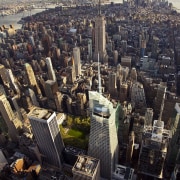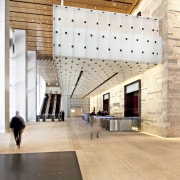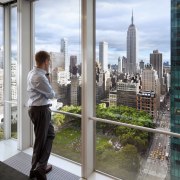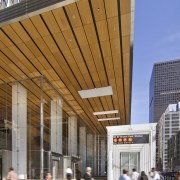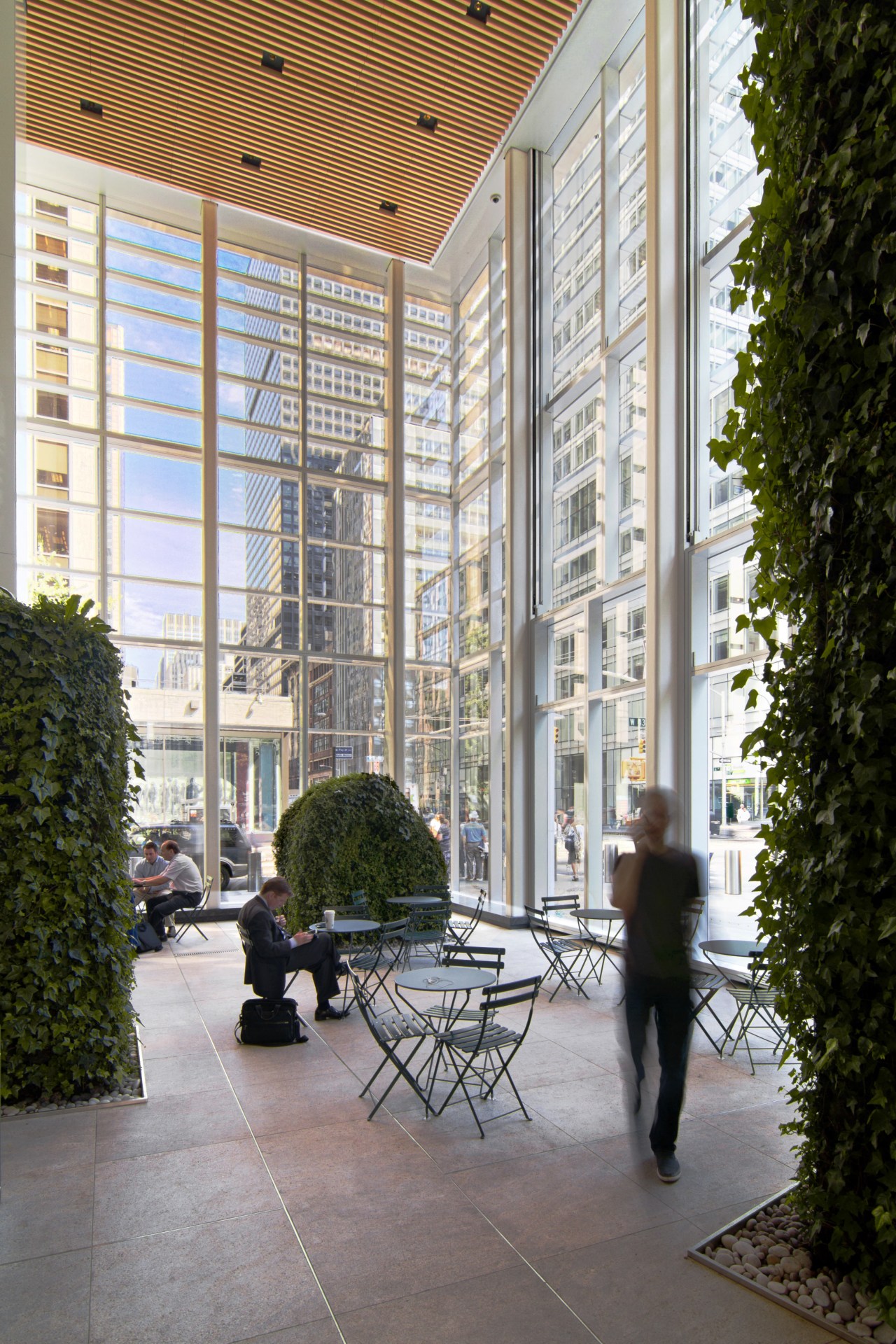New kid on the block
Standing tall in the heart of Manhattan, the Bank of America Tower offsets its stature with LEED Platinum accreditation the first for a commercial tower
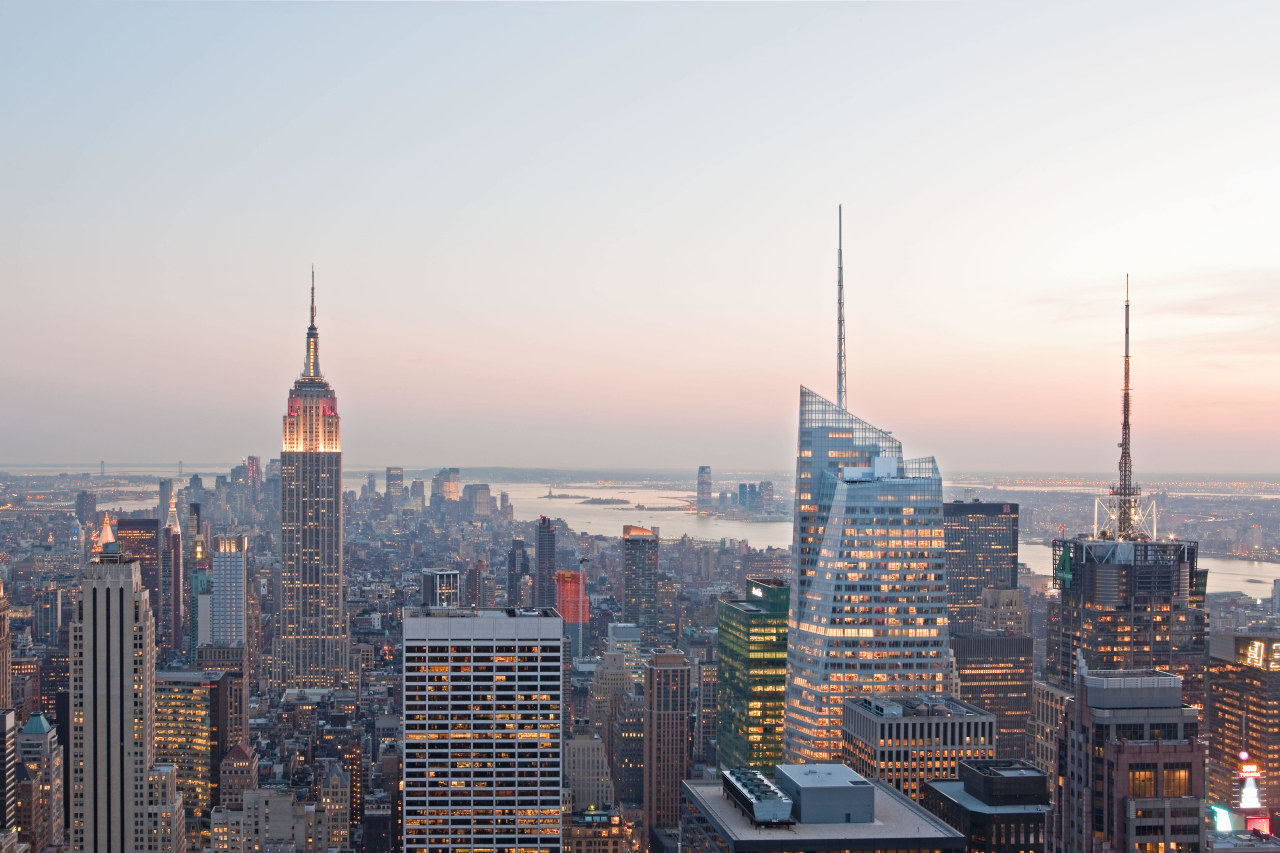
When arguably the largest player in United States banking opens a headquarters in the Big Apple, it makes sense the new tower will project a clear statement of intent. When the building cuts a dynamic profile on the skyline, has a people-friendly scale at street level and the highest possible LEED rating, the message of prosperity and community involvement is clear.
The dramatic new Bank of America Tower, standing proud at One Bryant Park on Sixth Avenue, was built to accommodate the financial institution's New York head office. Developed by The Durst Organization and designed by Cook + Fox Architects with Serge Appel as lead project architect, the 55-storey tower is a celebration of ground-breaking, high-performance architecture.
Inspiration for the aesthetic came from diverse sources the 1853 Crystal Palace which once stood in Bryant Park and the shape of a crystal in a Durst family member's quartz collection. The second-tallest skyscraper in the city, its lofty proportions culminate in a dramatic, yet practical, architectural flourish.
"As it rises from the uniform grid of the street, the massing of the tower shears into two offset halves, increasing the verticality of its proportions as well as the surfaces exposed to daylight," says Appel. "From these two Cartesian volumes, mass is then sliced away, producing angular facets that open up oblique views around and through the urban forest of mid-town skyscrapers."
As well as opening up vistas above, the tower engages with its surroundings at ground level.

"The transparent lobby opens to a corner of Bryant Park visually connecting New York's busiest green space with the interior at pedestrian level," says Appel. "The tower has a public urban garden room on another corner that further blurs the line between indoor and outdoor spaces."
Cook + Fox Architects subtly angled the facade back as it ascends, receding 2cm at each level but over 55 levels the incline soon becomes significant. The retreating walls admit additional sunlight down into the skyscraper canyons and also make the building seem less overbearing when viewed from below. This was an important design aspect, given its position among monoliths that stand only around 100m apart.
However, the Bank of America Tower's most important relationship to the environment is through its innovative, comprehensive attention to sustainability. The Bank of America Tower has earned LEED Platinum certification, the first commercial tower to do so. Contributions include water-free urinals and repurposed grey water that save 30 million litres of water per year and a localised underfloor air system and lighting on automatic daylight dimmers.
But its physical makeup, which includes two transformative energy-efficient factors, is what really sets the tower apart.
The tower is built with concrete made from 45% slag, a waste by-product of blast furnaces, a process which produces a smaller volume of greenhouse gas than is emitted in the manufacture of traditional concrete.
"There are two ways the building reduces strain on the electricity grid during peak hours," says Appel. "A clean-burning 5-megawatt co-generation plant like a massive jet engine converts gas into electricity. This provides 65% of the tower's annual electricity requirements and lowers public-supply usage during the day by 30%."
"This operates in conjunction with a thermal storage system which creates ice overnight, when demand and cost of electricity is lower. The ice then melts through the next day, to assist with the building's air conditioning."
A highly efficient glazing wall is a major factor in the Platinum pedigree. The front of the banking tower, facing the park, has a double layer of floor-to-ceiling glass on all levels. This facade minimises solar heat gain through the use of low-e glass and heat-reflecting ceramic frit. Hot air trapped in the wall space is channelled away to maintain comfortable temperatures. This glazed wall has the advantage of offering extended sightlines from deep in the building out to the views. Similarly, natural light penetrates deeper into the building.
"The most amazing thing about the Bank of America Tower is that all these elements come together in one building," says Appel. "Savings on water, energy, and construction materials as well as the attitude of all who worked on it have won the tower its prized LEED Platinum accreditation."
Credit list
Architects
Construction
Interior designer
Story by: Trendsideas
Home kitchen bathroom commercial design






